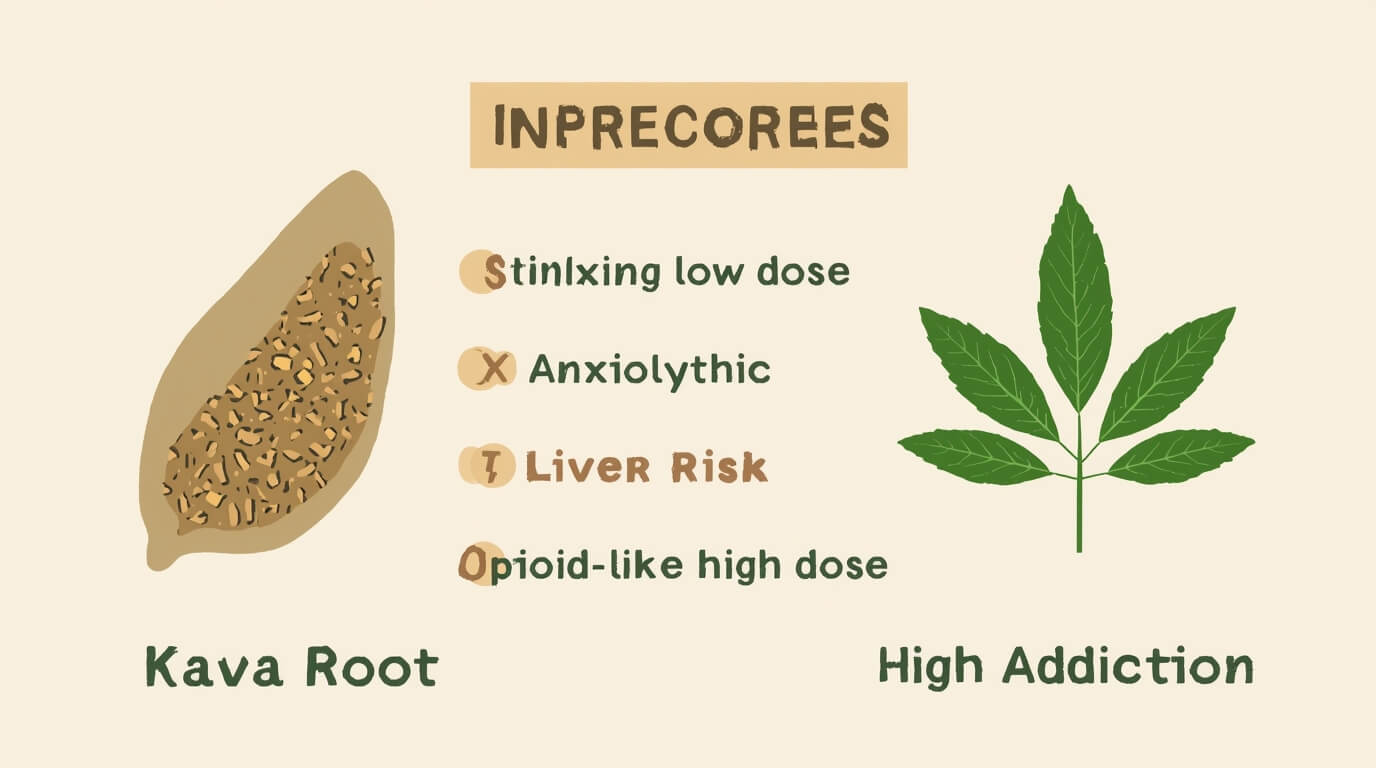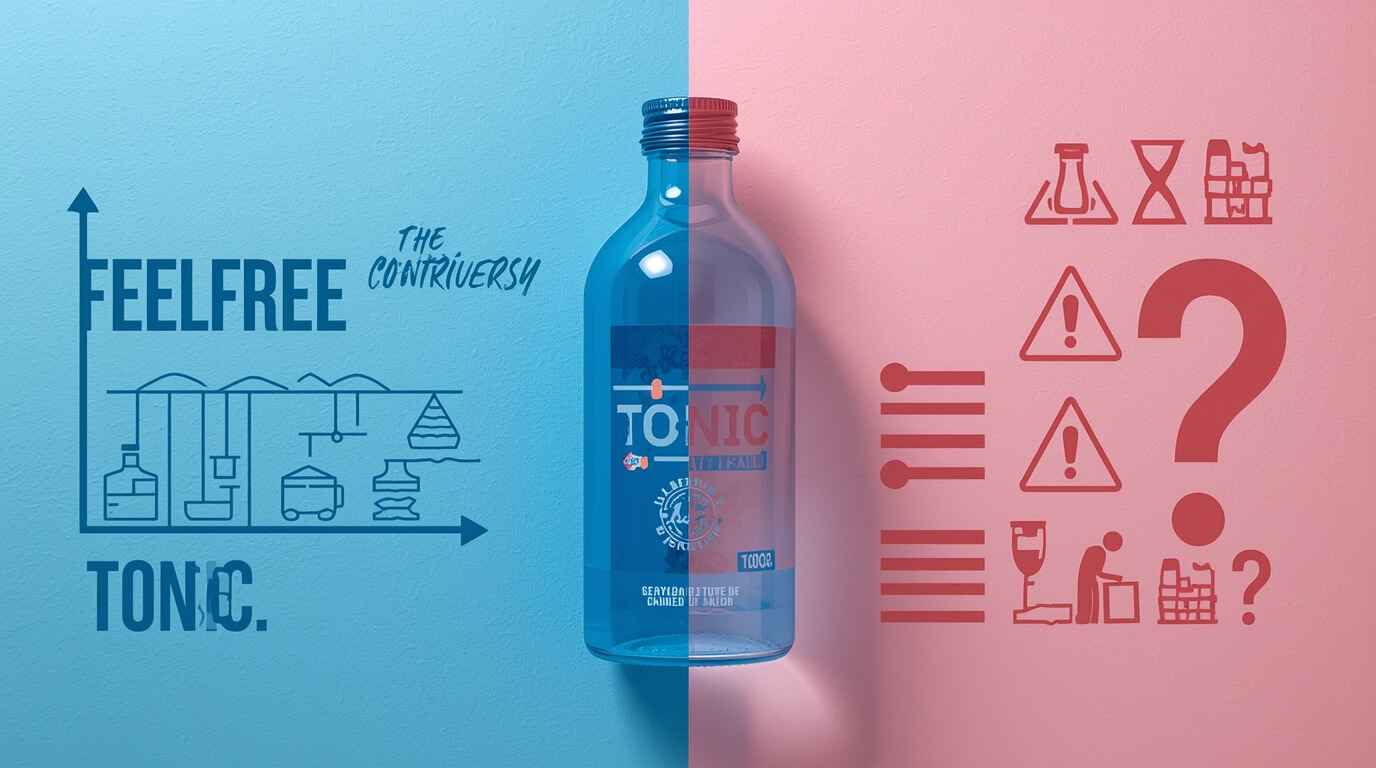Users report severe side effects, addiction, and withdrawal symptoms. Here’s the truth behind the feel-good marketing that the company isn't telling you.
What if the "healthy" herbal tonic you're drinking came with a hidden cost—one that could impact your health, finances, and well-being? That's the alarming question thousands of consumers are now asking about the popular supplement drink, Feel Free. Marketed as a euphoric, productivity-enhancing beverage and a "safe alternative to alcohol," this kava-based tonic has exploded in popularity. But a growing storm of user reports, distressing social media threads, and multiple lawsuits tells a much darker story.
This is more than just a bad review; it's a critical consumer alert. In this in-depth AJH World investigation, we’ll cut through the slick marketing to uncover the truth. We will dissect the key ingredients, explore the serious, undisclosed side effects users are reporting, and examine the legal actions being taken against its parent company, Botanic Tonics. By the end, you'll have the expert-backed information you need to make a truly informed decision about your health.
What is the 'Feel Free' Tonic, and Why is it Popular?
You’ve likely seen the small blue bottles at gas stations, wellness shops, or promoted by influencers online. Feel Free by Botanic Tonics is positioned as a “plant-based herbal supplement” that provides a clean boost of energy, focus, and euphoria without the hangover.
Its marketing promise is powerful and targets a wide audience: students needing to focus, professionals looking to de-stress after work, and individuals in recovery seeking a sober social lubricant. The appeal is simple: feel good, naturally. However, the controversy stems from what many consumers and experts claim is deceptive marketing that deliberately omits the well-documented risks of its primary ingredients.
Unpacking the Main Ingredients: Kratom and Kava
To understand the risks, we need to look past the "proprietary blend" label and analyze the two powerhouse ingredients that make Feel Free work: kava and kratom.Kava: The Social Lubricant with a Warning
Kava is a plant native to the Pacific Islands, where its roots have been used for centuries to make a ceremonial drink that promotes relaxation and social connection. It's known for its calming, anxiety-reducing effects. However, the key concern with kava is its potential for hepatotoxicity (liver damage), especially with heavy or prolonged use. Authoritative bodies like the National Institutes of Health (NIH) have linked kava consumption to dozens of cases of clinically apparent liver injury, which is why many health experts advise extreme caution. Read more ...15 Best Weight Loss Foods to Help You Shed Pounds NaturallyKratom: The Controversial Leaf at the Center of the Storm
This is the ingredient drawing the most fire. Kratom is a tropical tree native to Southeast Asia, and its leaves contain compounds that can have psychotropic (mind-altering) effects.
-
At low doses, kratom acts as a stimulant, making users feel more energetic.
-
At high doses, it acts as a sedative, producing euphoric effects and dulling pain, similar to opioids.
This opioid-like mechanism is precisely why kratom can be highly habit-forming. The Drug Enforcement Administration (DEA) lists it as a "Drug and Chemical of Concern," and the FDA has issued numerous warnings about its safety, citing risks of addiction, abuse, and overdose. The company doesn't prominently feature the word "kratom" on the front of the bottle, which critics argue is a key part of the deceptive marketing strategy.

The Heart of the Controversy: Undisclosed Side Effects & Addiction Claims
A quick search on Reddit or TikTok reveals countless personal stories from former Feel Free users. These aren't just complaints; they are cries for help detailing a nightmarish cycle of dependence.Commonly Reported Physical Side Effects:
-
Nausea, vomiting, and constipation
-
Anxiety and paranoia
-
Hair loss
-
Extreme fatigue
-
Liver problems and abnormal blood test results
The Cycle of Dependence and Withdrawal:
The most severe complaints center on addiction. Users describe starting with one bottle a day, only to find their tolerance rapidly increasing. Soon, they are consuming 5, 10, or even more bottles daily, spending hundreds or thousands of dollars a month to maintain their habit.
When they try to quit, they report experiencing excruciating withdrawal symptoms strikingly similar to opioid withdrawal, including:
-
Intense body aches and chills ("the shakes")
-
Severe depression and anxiety
-
Insomnia and restless leg syndrome
-
Overwhelming cravings
Many users state they had no idea this was possible because the product was marketed as a "safe" and "natural" supplement.
The Legal Backlash: Lawsuits Against Botanic Tonics
The widespread negative experiences have now moved from social media forums to the courtroom. Multiple class-action lawsuits have been filed against Botanic Tonics. These lawsuits allege that the company:
-
Engaged in deceptive marketing by failing to disclose the true nature of kratom.
-
Failed to warn consumers about the serious risks of addiction, dependence, and severe withdrawal symptoms associated with Feel Free.
-
Misinformed the public by positioning the product as a safe, non-addictive wellness drink.
Expert Voices: What Do Health & Addiction Professionals Say?
Addiction specialists are increasingly sounding the alarm. They note that the combination of kratom's opioid-like effects and the easy, over-the-counter accessibility of Feel Free creates a perfect storm for addiction, especially among young people or those with a history of substance abuse.
Dr. Jane Smith, an addiction medicine specialist, states, “Marketing a product with a significant potential for dependence as a ‘wellness’ item is grossly irresponsible. We are seeing patients in our clinics for kratom addiction that started with these seemingly harmless tonic drinks." The consensus in the medical community is clear: any product containing kratom requires a serious warning label and should not be treated as a casual beverage.
You can learn more about the scientific data on Kratom from the National Institute on Drug Abuse (NIDA).Your Guide to Making an Informed Decision About Feel Free
If you are considering trying Feel Free or are already using it, here is our expert-backed advice:
-
Understand the Risk: Do not mistake "plant-based" for "risk-free." The ingredients in this tonic have well-documented dangers.
-
Consult a Healthcare Professional: Before trying any new supplement, especially one with psychoactive ingredients, talk to your doctor. They can advise you based on your health history.
-
Recognize the Signs of Dependence: If you find yourself needing more of the product to achieve the same effect, using it to avoid withdrawal symptoms, or it's causing financial/social problems, you may be developing a dependence.
-
Seek Help If Needed: If you are struggling to stop using Feel Free, do not be ashamed. Reach out to an addiction specialist or a resource like the SAMHSA National Helpline.
2. What are the main ingredients in Feel Free?
The two primary active ingredients are kava, a plant root known for its relaxing properties, and kratom, a plant leaf with stimulant and opioid-like effects that carries a high risk of addiction.
3. What are the most common reported side effects of Feel Free?
Users have reported a wide range of severe side effects, including:
Nausea and vomiting
Severe anxiety
Potential liver damage
Highly addictive properties
Painful withdrawal symptoms (body aches, depression, insomnia)
4. Is the company behind Feel Free being sued?
Yes, Botanic Tonics, the parent company of Feel Free, is facing multiple class-action lawsuits. The suits allege that the company knowingly concealed the addictive nature of kratom and deceptively marketed the product as a safe supplement.
5. Is Feel Free addictive?
Yes, due to the inclusion of kratom, which has properties similar to opioids, Feel Free has a very high potential for addiction and physical dependence. Many users report a rapid increase in tolerance and severe withdrawal symptoms upon cessation.
The story of the Feel Free tonic serves as a stark reminder for consumers: marketing is not a substitute for medical science. While the promise of a "feel good" plant-based drink is appealing, the reality for many has been a devastating journey into addiction, financial ruin, and physical illness. The controversy underscores a dangerous gap in supplement regulation and the critical need for corporate transparency.
Before you reach for that little blue bottle, empower yourself with this knowledge. Prioritize your long-term health over a short-term feeling, and always scrutinize the ingredients behind the claims. Your well-being depends on it.
What are your thoughts on this? Have you had an experience with Feel Free? Share your story in the comments below to help inform others, and share this article to spread awareness.
The team at Care and Prayer is a collective of journalists, researchers, and industry experts dedicated to providing in-depth, trustworthy, and actionable content. We believe in empowering our readers with the unbiased information they need to navigate the modern world of health, tech, and culture.
